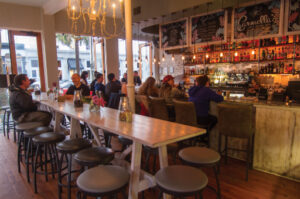Charleston Officials Striving to Enhance Accessibility
In an endeavor to improve inclusivity while preserving the charm of historic properties, officials in Charleston, S.C., are actively pursuing better accessibility measures within city boundaries.
Major Improvements Since Implementation of ADA
Since the implementation of the Americans with Disabilities Act (ADA) in the 1990s, several changes have been made in Charleston showing a positive shift towards improved accessibility. The ADA Coordinator, Janet Schumacher, acknowledges the many accomplishments but affirms there’s still a lot to be done, stating, “There have been hundreds of curb cuts in the City of Charleston, making almost all buildings perfectly accessible.”
Current and Future Projects
Schumacher throws light on ongoing efforts to upgrade accessibility in city parks, including enhancements to restroom accommodations and parking options. A significant achievement she highlighted is the improvement around Charleston Battery, where both sides of the city are now connected via a slope.
The Challenge of Preserving History
Balancing the demand for accessibility with the preservation of historic cityscapes is a unique challenge in a city like Charleston. Builds that are cherished as part of the city’s architectural heritage, such as the classic steps along King Street and the narrow door frames on Broad Street, require special consideration to maintain their character while becoming more accessible.
Invisible Disabilities: The Unseen Challenge
Schumacher emphasizes the need to consider “invisible” disabilities in planning and implementing accessibility measures. “Being considerate to each other, whether we can see the disability or not, is the way to go. We need to be more tolerant of the needs and not quite so quick to jump down somebody’s throat,” she says.
Role of the Technical Review Committee
Schumacher also highlights the importance of her inclusion in the city’s technical review committee. The committee, she says, ensures that any city project is required to take into consideration the requests and needs of the community to promote inclusivity. This includes travel and road easements and spaces frequently frequented by tourists.
Public Input Always Welcome
The city is interested in public input, particularly in regards to disability awareness and recommendations. Through the Disability Accessibility Grievance Form , community members can submit structure-specific questions or complaints, which help guide future actions to improve accessibility across the city.

























